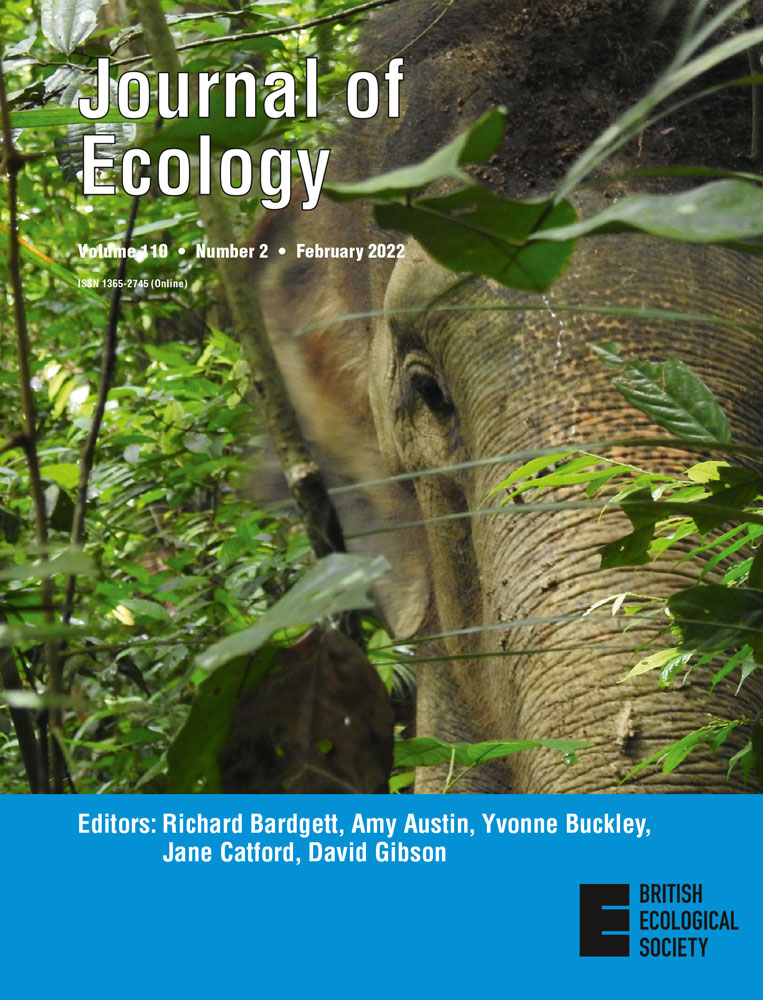Ver ítem
- xmlui.general.dspace_homeCentros Regionales y EEAsCentro Regional Patagonia SurEEA Santa CruzArtículos científicosxmlui.ArtifactBrowser.ItemViewer.trail
- Inicio
- Centros Regionales y EEAs
- Centro Regional Patagonia Sur
- EEA Santa Cruz
- Artículos científicos
- Ver ítem
Nutrient enrichment increases invertebrate herbivory and pathogen damage in grasslands
Resumen
1- Plant damage by invertebrate herbivores and pathogens influences the dynamics of grassland ecosystems, but anthropogenic changes in nitrogen and phosphorus availability can modify these relationships. 2- Using a globally distributed experiment, we describe leaf damage on 153 plant taxa from 27 grasslands worldwide, under ambient conditions and with experimentally elevated nitrogen and phosphorus. 3- Invertebrate damage significantly increased with
[ver mas...]
1- Plant damage by invertebrate herbivores and pathogens influences the dynamics of grassland ecosystems, but anthropogenic changes in nitrogen and phosphorus availability can modify these relationships. 2- Using a globally distributed experiment, we describe leaf damage on 153 plant taxa from 27 grasslands worldwide, under ambient conditions and with experimentally elevated nitrogen and phosphorus. 3- Invertebrate damage significantly increased with nitrogen addition, especially in grasses and non-leguminous forbs. Pathogen damage increased with nitrogen in grasses and legumes but not forbs. Effects of phosphorus were generally weaker. Damage was higher in grasslands with more precipitation, but climatic conditions did not change effects of nutrients on leaf damage. On average, invertebrate damage was relatively higher on legumes and pathogen damage was relatively higher on grasses. Community-weighted mean damage reflected these functional group patterns, with no effects of N on community-weighted pathogen damage (due to opposing responses of grasses and forbs) but stronger effects of N on community-weighted invertebrate damage (due to consistent responses of grasses and forbs). 4- Synthesis. As human-induced inputs of nitrogen and phosphorus continue to increase, understanding their impacts on invertebrate and pathogen damage becomes increasingly important. Our results demonstrate that eutrophication frequently increases plant damage and that damage increases with precipitation across a wide array of grasslands. Invertebrate and pathogen damage in grasslands is likely to increase in the future, with potential consequences for plant, invertebrate and pathogen communities, as well as the transfer of energy and nutrients across trophic levels.
[Cerrar]

Autor
Ebeling, Anne;
Strauss, Alex T.;
Adler, Peter B.;
Arnillas, Carlos Alberto;
Barrio, Isabel C.;
Biederman, Lori A.;
Borer, Elizabeth T.;
Bugalho, Miguel N.;
Caldeira, Maria C.;
Cadotte, Marc W.;
Peri, Pablo Luis;
Blumenthal, Dana M.;
Fuente
Journal of Ecology 110 (2) : 327-339. (February 2022)
Fecha
2022-02
Editorial
British Ecological Society
ISSN
1365-2745
Formato
pdf
Tipo de documento
artículo
Palabras Claves
Derechos de acceso
Abierto
 Excepto donde se diga explicitamente, este item se publica bajo la siguiente descripción: Creative Commons Attribution-NonCommercial-ShareAlike 2.5 Unported (CC BY-NC-SA 2.5)
Excepto donde se diga explicitamente, este item se publica bajo la siguiente descripción: Creative Commons Attribution-NonCommercial-ShareAlike 2.5 Unported (CC BY-NC-SA 2.5)


